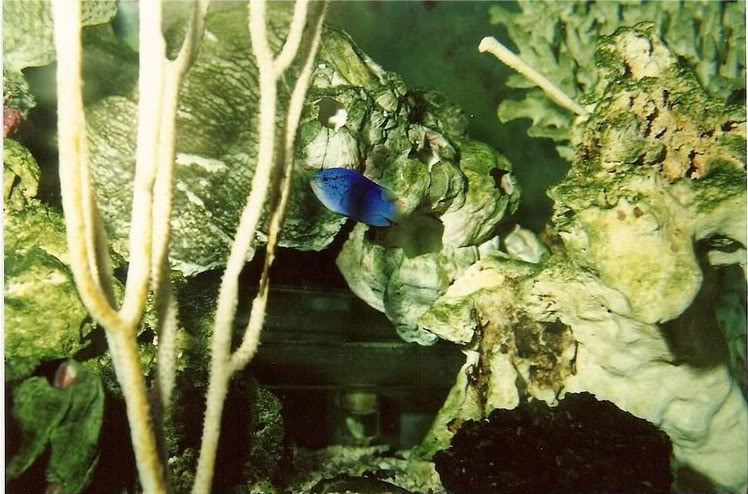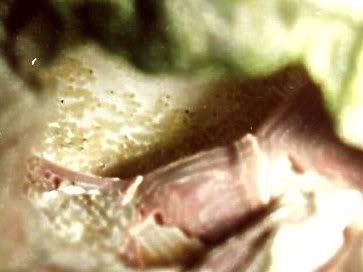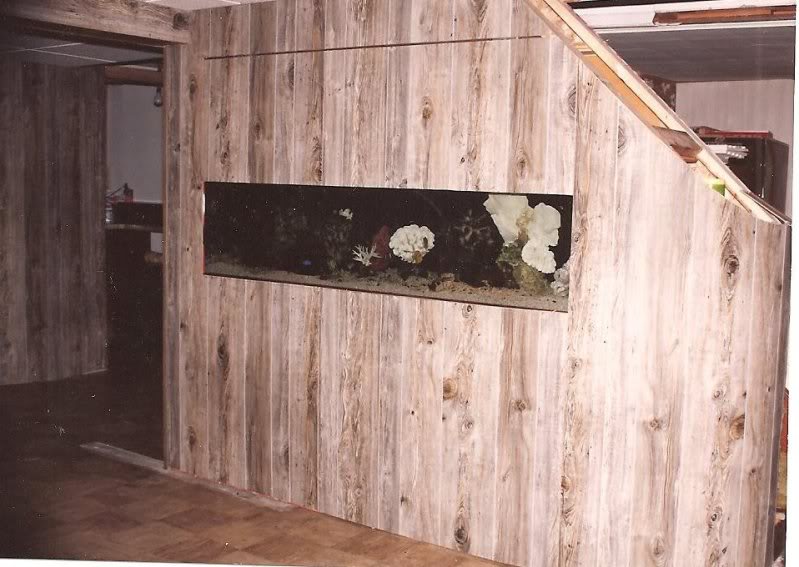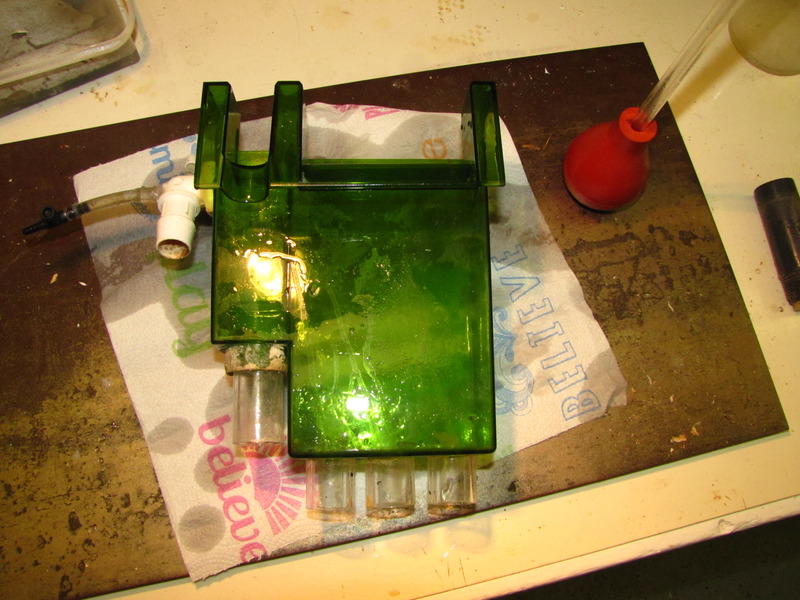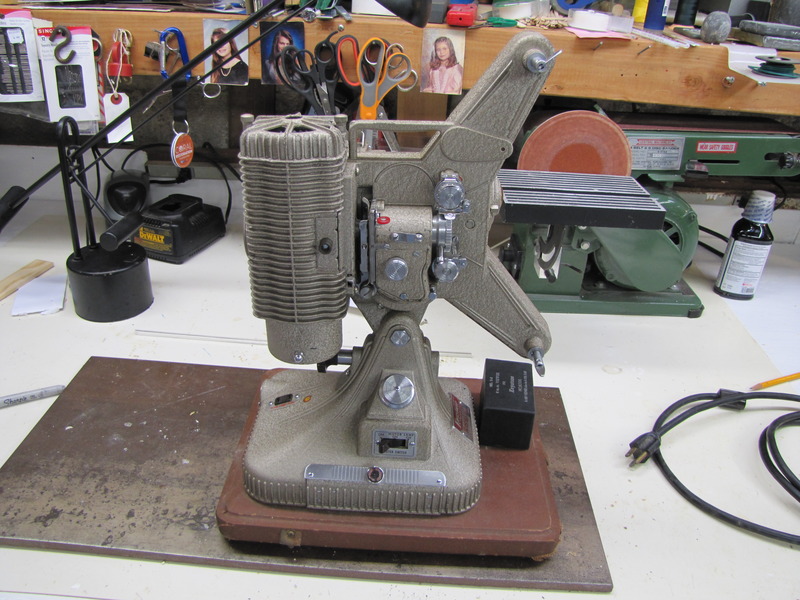Re-thinking the past…and using it to shape the future. Not a bad thing, right?
One of the coolest things about our hobby is the amazing progression over the years in both the state of the art and the technology that we embrace. Improvements that have enabled us to do things previously thought incredibly difficult or even impossible, unfold daily on social media. And the progression seems to be accelerating constantly. What an awesome time to be a fish geek!
Now, granted, we’ve been talking about some not-so-new ideas, like mud and refugiums and sand…but these are things that we are talking about incorporating into more modern iterations. It's not us pining away for the "good old days" of 2003 or whatever. Now, we do have some preconceptions based upon how things were when they first came to prominence, yet it’s literally a new era in the reef world since, say 2005 or so. It pays to look back at some of the “old” thinking, tempered with new approaches, technologies, and ideas- not to mention, the new “body of work” we as the reef community have accumulated in the last decade or so, right?

I was talking with a really pessimistic guy a while back, who basically trashed or dismissed every single development or change in the hobby over the last decade or so. According to him, nothing new or significant has happened, and pretty much everything new in the hobby is a "ripoff" of something that was “around before”… I think maybe he was jealous or something, but it was an attitude I’ve seen before in the hobby. Kind of a stupid attitude, really. After reading about and discussing some new product or evolved technique, you’ll often see these pessimists unleash comments on forums and other social media outlets like “That’s nothing new, really. ___________ had something like that a few years ago.” or “All that guy did was add______. It’s not really new.”
Reminds me of when people boast that they, “...Thought of the idea for Twitter” or whatever, years ago; just never got around to building it. Right.
Attitude. Jealousy, maybe?
Comments and attitudes like this seem to overlook a few simple facts, and the workings of aquarium hobby progress is kind of interesting, so let’s look at this a bit closer. Did you ever think about how the technology and practices we routinely utilize in the hobby even came into being? Much of it-but certainly not all of it- is built upon achievements and developments from the past. This is not some high-concept..I mean, it all started with a goldfish bowl, right? Sure, there are brand new technologies that trickle into the hobby all the time, yet many of the hottest new products and techniques of today arose as a result of someone looking at something that was already in existence and saying, “I can do better than that.” It’s the “better mousetrap” theory-solving a pain point with something that works better. Things evolve over time, often borrowing from existing technology or technique.

“Oh, he’s using that term “evolve” again…Sheesh, what is it with this guy?”
We don’t need to look too far back into the aquarium hobby’s past to see a prime example of this evolution, either:
Remember the “trickle filter?” Derived from sewage treatment technology, this venerable invention powered the reef systems of the mid eighties, placing the promise of the “miniature reef” into the grasp of almost every marine hobbyist. George Smit’s landmark series of articles in FAMA magazine in 1986, extolling this technology, literally helped launch the modern mass-market reef aquarium craze as we know it. By 1988, it seemed like the marine sector of the hobby exploded in popularity, with dozens of new filter manufacturers arriving on the scene almost monthly.

As the decade wore on, however, hobbyists and manufacturers saw fit to improve the trickle filters that were available at the time, creating new models with features like greater media capacity, more baffles to break up flow, and compartments to hold equipment like protein skimmers and reactors. Little improvements that provided increased performance. Nothing revolutionary, mind you- just “tweaks.” Yet, “tweaks” that represented significant improvements in performance from earlier iterations, promising better results for hobbyists. Eventually, it was determined that trickle filters were great at removing ammonia and nitrite, yet tended to allow nitrate to accumulate rapidly. In the nineties, many reefers embraced the belief that any accumulating nitrate could be a potential detriment to coral growth and long-term fish health, and almost overnight,“conventional” trickle filtration began to fall out of favor. Hobbyists everywhere began yanking the plastic filter media (bioballs, etc.) from their trickle filters.
(I laugh now, because most of the best reefs I know of have detectable nitrate levels…And from personal experience, I have found that corals always look better with some nitrate and phosphate detectible…)
With this little adjustment, the “trickle filter” became the “sump”, and was primarily the nexus for water treatment (mechanical and chemical) for the aquarium. (would have sucked to be in the plastic filter media manufacturing business about that time, huh? A definite candidate for the proverbial “buggy whip” of the 20th century, for sure!)

(Marc Levenson is my sump design hero!)
With no use for biological “towers” within this new school of thought, this feature began to disappear from filters. Calcium hydroxide (“Kalkwasser”) dosing was utilized to increase alkalinity and calcium and to precipitate phosphates… The “Berlin Method” of reef keeping had arrived, and a variation of this method has been more-or-less the state of the art ever since, with some adjustments and tweaks here and there. Once again, existing technology had “morphed” to accommodate the prevailing school of thought. The state of the art evolved, and so did the equipment. An idea from the past was improved upon to accommodate the needs of the present.

(More love for Mr. Poletti!)
In my opinion, some of us in the hobby are often too quick to chide such evolutionary steps as “copying” or “ripping off” existing ideas, when in reality, they are simply improving and building upon what was already there. I mean, you need a pump to move water, so why not use the latest DC technology instead of 1970’s-vintage motors, right? Duh. This is the necessary progression of things in many cases. We didn’t make the leap from under-gravel filters to high-capacity sumps and hyper-efficient protein skimmers with electronic DC pumps, or from normal output fluorescent to programmable LED lighting, overnight. Hobbyists, manufacturers, and product designers looked at the prevailing technology of the day, assessed the needs of the hobby, and attempted to improve upon these existing technologies.

Remember, many of these improvements are done to gain a market advantage over competitors. For example, if I make an easier to maintain filter, hobbyists are more likely to purchase my product. Further refinements take place all the time. Sometimes, aftermarket businesses spring up around improvements to existing mass-market products. Technology like 3D printing will further “democratize” this process, making it possible for small businesses to offer incremental improvements to established equipment…This is cool! This is how the hobby progresses.
It’s not just limited to the aquarium hobby, obviously. Think about everyday technologies, such as telephones. When the cord on the phone was cut, it changed the way we communicate as a species. Improvements in technology revolutionized the way we could quickly interact with others and gave us the “smart phones” that pretty much run our lives. They allow us to talk, write, text, send photos, stream video and shop effortlessly and instantaneously with others, creating true global communication once though impossible. We take it for granted.
And we sometimes do in the aquarium world, too.
Need more proof that change and progression in our hobby are often the result of evolution? Look no further than one of my longstanding favorite hobby topics- reef aquarium aquascaping! Those of you familiar with my rants from the saltwater world know that I am no lover of the ever pervasive “wall of rock”, which is essentially a large quantity of live rock, more or less stacked end-to-end in the aquarium. It’s been utilized as the “default” aquascaping configuration since the beginning of the reef aquarium hobby. In my opinion, it’s outdated, uninspired, functionally detrimental- and just unnecessary. I feel so strongly about this because, among other reasons, I understand its history.

Back in the 80’s, “live rock” was a breakthrough in aquarium management. Biological “filtration” and diversity of life were considered revolutionary concepts in aquaria. It was widely believed that you needed “x” number of pound per gallon of aquarium capacity to achieve these results, so when we set up our tanks, we dutifully dumped tons (literally, in some cases) of rock into them! Even though water capacity, swimming area, and flow were often compromised with this configuration, it was a widely held that the benefits were far greater than any potential downside.
Over the years, however, it was discovered that we really don’t need all that rock for biological filtration, and that you could utilize other techniques (use of refugia, protein skimming, macroalgae) to help efficiently process nutrients in our aquaria. Hobbyists began to experiment by creating systems with less rock. With the better understanding of biological processes and their affect on husbandry that we developed over the years, water volume and movement have taken on greater significance, and hobbyists began to utilize far less rock in their aquascapes, unless their design called for it. The “rock wall” was no longer considered the “only way” to run a reef system, and the concept of reef aquascaping has evolved dramatically, experiencing a real renaissance of sorts.

Oh, and there’s pretty cool artificial live rock now, too. Another “evolution!”
Inspiration is an “open source”, and innovation is for anyone to embrace. It can come from anywhere, at any time. Some aquarium technologies, such as lighting, borrow from other industries or fields of endeavor, whereas others, such as the development of new food products, arise out of knowledge and experience gained within the fields of marine science and aquaculture-and good old hobbyist experience as well. Ideas, technologies, and technique “cross-pollinate” between fields, and the changes benefit us all. Looking to change the hobby? Look at the world around you!
There is no great “hobby conspiracy” that seeks to keep ideas and progression in the hands of some chosen few. These days, anyone with an idea and determination can forge a new path for the hobby. Think about this for a while: As a fan of the high-biodiversity reef aquarium “idea”, you’re actually a participant in the progression in the hobby! You’ve got a front row seat to the revolution, and your comments, questions, and ideas do not go unnoticed by manufacturers, fellow hobbyists, and industry people. You can make the change happen! You are doing it now!
If I can do it with "leaves and twigs", we can definitely do a lot with mud, seagrasses, macroalage, and sponges!

Re-thinking the application of mud substrates, refugiums, and macro algae and figuring out ways to incorporate them into our “postmodern” reef systems is not some form of nostalgia…It’s recognizing that the idea works. It worked “back then”, too, but was cast aside in the rush for new discoveries and the application of the latest gadgets. We’ve sort of come full circle, realizing that what got us to this point all worked to a certain extent, at least. It’s up to us to figure out how to “hack” this stuff into the “latest and greatest”, right?

So, the next time you might be tempted to criticize someone’s new hobby idea or product because it seemingly ”borrows” from something already in existence, realize that you’re merely seeing the evolution of the hobby at its flash point. It’s easy for me to question the “necessity” of stuff like the lighted algae reactors that are so hot, but the reality is they take an old idea and make it work in a new environment. I'll admit that I was too hard on this newfound love for using them to grow alage…However, I guess it’s like using iTunes in a dock in your 1990’s era-SUV- it works. So the takeaway from grumpy old me is, Don’t just chide the development because part of it seems derived from something familiar. Embrace it, enjoy it, and utilize it…. improve it, if you think you can- or if you think it is needed!
Stay creative. Stay progressive. Stay forward-thinking.
And Stay Wet.
Scott Fellman
Tannin Aquatics
One of the coolest things about our hobby is the amazing progression over the years in both the state of the art and the technology that we embrace. Improvements that have enabled us to do things previously thought incredibly difficult or even impossible, unfold daily on social media. And the progression seems to be accelerating constantly. What an awesome time to be a fish geek!
Now, granted, we’ve been talking about some not-so-new ideas, like mud and refugiums and sand…but these are things that we are talking about incorporating into more modern iterations. It's not us pining away for the "good old days" of 2003 or whatever. Now, we do have some preconceptions based upon how things were when they first came to prominence, yet it’s literally a new era in the reef world since, say 2005 or so. It pays to look back at some of the “old” thinking, tempered with new approaches, technologies, and ideas- not to mention, the new “body of work” we as the reef community have accumulated in the last decade or so, right?
I was talking with a really pessimistic guy a while back, who basically trashed or dismissed every single development or change in the hobby over the last decade or so. According to him, nothing new or significant has happened, and pretty much everything new in the hobby is a "ripoff" of something that was “around before”… I think maybe he was jealous or something, but it was an attitude I’ve seen before in the hobby. Kind of a stupid attitude, really. After reading about and discussing some new product or evolved technique, you’ll often see these pessimists unleash comments on forums and other social media outlets like “That’s nothing new, really. ___________ had something like that a few years ago.” or “All that guy did was add______. It’s not really new.”
Reminds me of when people boast that they, “...Thought of the idea for Twitter” or whatever, years ago; just never got around to building it. Right.
Attitude. Jealousy, maybe?
Comments and attitudes like this seem to overlook a few simple facts, and the workings of aquarium hobby progress is kind of interesting, so let’s look at this a bit closer. Did you ever think about how the technology and practices we routinely utilize in the hobby even came into being? Much of it-but certainly not all of it- is built upon achievements and developments from the past. This is not some high-concept..I mean, it all started with a goldfish bowl, right? Sure, there are brand new technologies that trickle into the hobby all the time, yet many of the hottest new products and techniques of today arose as a result of someone looking at something that was already in existence and saying, “I can do better than that.” It’s the “better mousetrap” theory-solving a pain point with something that works better. Things evolve over time, often borrowing from existing technology or technique.
“Oh, he’s using that term “evolve” again…Sheesh, what is it with this guy?”
We don’t need to look too far back into the aquarium hobby’s past to see a prime example of this evolution, either:
Remember the “trickle filter?” Derived from sewage treatment technology, this venerable invention powered the reef systems of the mid eighties, placing the promise of the “miniature reef” into the grasp of almost every marine hobbyist. George Smit’s landmark series of articles in FAMA magazine in 1986, extolling this technology, literally helped launch the modern mass-market reef aquarium craze as we know it. By 1988, it seemed like the marine sector of the hobby exploded in popularity, with dozens of new filter manufacturers arriving on the scene almost monthly.
As the decade wore on, however, hobbyists and manufacturers saw fit to improve the trickle filters that were available at the time, creating new models with features like greater media capacity, more baffles to break up flow, and compartments to hold equipment like protein skimmers and reactors. Little improvements that provided increased performance. Nothing revolutionary, mind you- just “tweaks.” Yet, “tweaks” that represented significant improvements in performance from earlier iterations, promising better results for hobbyists. Eventually, it was determined that trickle filters were great at removing ammonia and nitrite, yet tended to allow nitrate to accumulate rapidly. In the nineties, many reefers embraced the belief that any accumulating nitrate could be a potential detriment to coral growth and long-term fish health, and almost overnight,“conventional” trickle filtration began to fall out of favor. Hobbyists everywhere began yanking the plastic filter media (bioballs, etc.) from their trickle filters.
(I laugh now, because most of the best reefs I know of have detectable nitrate levels…And from personal experience, I have found that corals always look better with some nitrate and phosphate detectible…)
With this little adjustment, the “trickle filter” became the “sump”, and was primarily the nexus for water treatment (mechanical and chemical) for the aquarium. (would have sucked to be in the plastic filter media manufacturing business about that time, huh? A definite candidate for the proverbial “buggy whip” of the 20th century, for sure!)
(Marc Levenson is my sump design hero!)
With no use for biological “towers” within this new school of thought, this feature began to disappear from filters. Calcium hydroxide (“Kalkwasser”) dosing was utilized to increase alkalinity and calcium and to precipitate phosphates… The “Berlin Method” of reef keeping had arrived, and a variation of this method has been more-or-less the state of the art ever since, with some adjustments and tweaks here and there. Once again, existing technology had “morphed” to accommodate the prevailing school of thought. The state of the art evolved, and so did the equipment. An idea from the past was improved upon to accommodate the needs of the present.
(More love for Mr. Poletti!)
In my opinion, some of us in the hobby are often too quick to chide such evolutionary steps as “copying” or “ripping off” existing ideas, when in reality, they are simply improving and building upon what was already there. I mean, you need a pump to move water, so why not use the latest DC technology instead of 1970’s-vintage motors, right? Duh. This is the necessary progression of things in many cases. We didn’t make the leap from under-gravel filters to high-capacity sumps and hyper-efficient protein skimmers with electronic DC pumps, or from normal output fluorescent to programmable LED lighting, overnight. Hobbyists, manufacturers, and product designers looked at the prevailing technology of the day, assessed the needs of the hobby, and attempted to improve upon these existing technologies.
Remember, many of these improvements are done to gain a market advantage over competitors. For example, if I make an easier to maintain filter, hobbyists are more likely to purchase my product. Further refinements take place all the time. Sometimes, aftermarket businesses spring up around improvements to existing mass-market products. Technology like 3D printing will further “democratize” this process, making it possible for small businesses to offer incremental improvements to established equipment…This is cool! This is how the hobby progresses.
It’s not just limited to the aquarium hobby, obviously. Think about everyday technologies, such as telephones. When the cord on the phone was cut, it changed the way we communicate as a species. Improvements in technology revolutionized the way we could quickly interact with others and gave us the “smart phones” that pretty much run our lives. They allow us to talk, write, text, send photos, stream video and shop effortlessly and instantaneously with others, creating true global communication once though impossible. We take it for granted.
And we sometimes do in the aquarium world, too.
Need more proof that change and progression in our hobby are often the result of evolution? Look no further than one of my longstanding favorite hobby topics- reef aquarium aquascaping! Those of you familiar with my rants from the saltwater world know that I am no lover of the ever pervasive “wall of rock”, which is essentially a large quantity of live rock, more or less stacked end-to-end in the aquarium. It’s been utilized as the “default” aquascaping configuration since the beginning of the reef aquarium hobby. In my opinion, it’s outdated, uninspired, functionally detrimental- and just unnecessary. I feel so strongly about this because, among other reasons, I understand its history.
Back in the 80’s, “live rock” was a breakthrough in aquarium management. Biological “filtration” and diversity of life were considered revolutionary concepts in aquaria. It was widely believed that you needed “x” number of pound per gallon of aquarium capacity to achieve these results, so when we set up our tanks, we dutifully dumped tons (literally, in some cases) of rock into them! Even though water capacity, swimming area, and flow were often compromised with this configuration, it was a widely held that the benefits were far greater than any potential downside.
Over the years, however, it was discovered that we really don’t need all that rock for biological filtration, and that you could utilize other techniques (use of refugia, protein skimming, macroalgae) to help efficiently process nutrients in our aquaria. Hobbyists began to experiment by creating systems with less rock. With the better understanding of biological processes and their affect on husbandry that we developed over the years, water volume and movement have taken on greater significance, and hobbyists began to utilize far less rock in their aquascapes, unless their design called for it. The “rock wall” was no longer considered the “only way” to run a reef system, and the concept of reef aquascaping has evolved dramatically, experiencing a real renaissance of sorts.
Oh, and there’s pretty cool artificial live rock now, too. Another “evolution!”
Inspiration is an “open source”, and innovation is for anyone to embrace. It can come from anywhere, at any time. Some aquarium technologies, such as lighting, borrow from other industries or fields of endeavor, whereas others, such as the development of new food products, arise out of knowledge and experience gained within the fields of marine science and aquaculture-and good old hobbyist experience as well. Ideas, technologies, and technique “cross-pollinate” between fields, and the changes benefit us all. Looking to change the hobby? Look at the world around you!
There is no great “hobby conspiracy” that seeks to keep ideas and progression in the hands of some chosen few. These days, anyone with an idea and determination can forge a new path for the hobby. Think about this for a while: As a fan of the high-biodiversity reef aquarium “idea”, you’re actually a participant in the progression in the hobby! You’ve got a front row seat to the revolution, and your comments, questions, and ideas do not go unnoticed by manufacturers, fellow hobbyists, and industry people. You can make the change happen! You are doing it now!
If I can do it with "leaves and twigs", we can definitely do a lot with mud, seagrasses, macroalage, and sponges!
Re-thinking the application of mud substrates, refugiums, and macro algae and figuring out ways to incorporate them into our “postmodern” reef systems is not some form of nostalgia…It’s recognizing that the idea works. It worked “back then”, too, but was cast aside in the rush for new discoveries and the application of the latest gadgets. We’ve sort of come full circle, realizing that what got us to this point all worked to a certain extent, at least. It’s up to us to figure out how to “hack” this stuff into the “latest and greatest”, right?
So, the next time you might be tempted to criticize someone’s new hobby idea or product because it seemingly ”borrows” from something already in existence, realize that you’re merely seeing the evolution of the hobby at its flash point. It’s easy for me to question the “necessity” of stuff like the lighted algae reactors that are so hot, but the reality is they take an old idea and make it work in a new environment. I'll admit that I was too hard on this newfound love for using them to grow alage…However, I guess it’s like using iTunes in a dock in your 1990’s era-SUV- it works. So the takeaway from grumpy old me is, Don’t just chide the development because part of it seems derived from something familiar. Embrace it, enjoy it, and utilize it…. improve it, if you think you can- or if you think it is needed!
Stay creative. Stay progressive. Stay forward-thinking.
And Stay Wet.
Scott Fellman
Tannin Aquatics
Last edited by a moderator:






